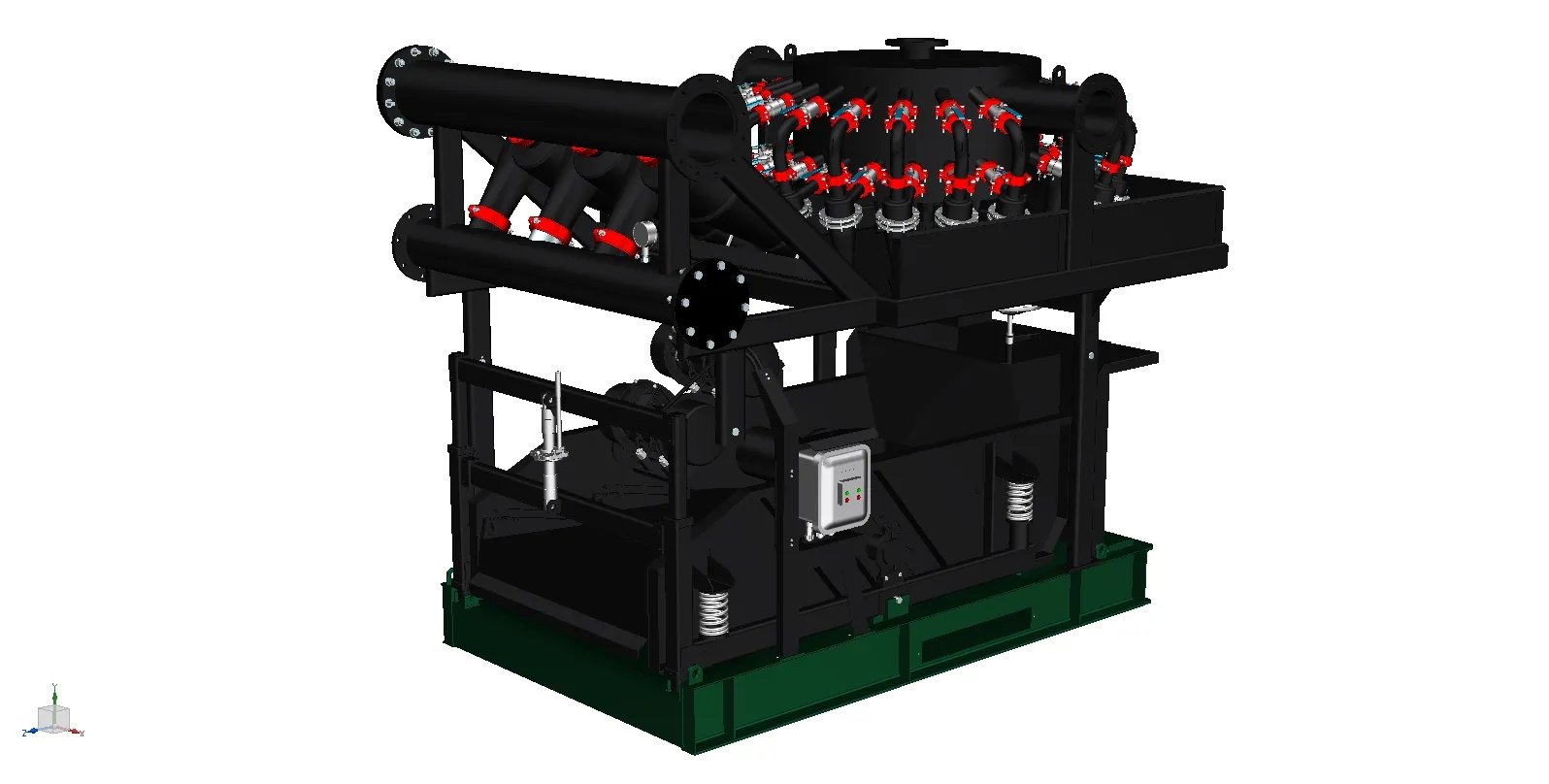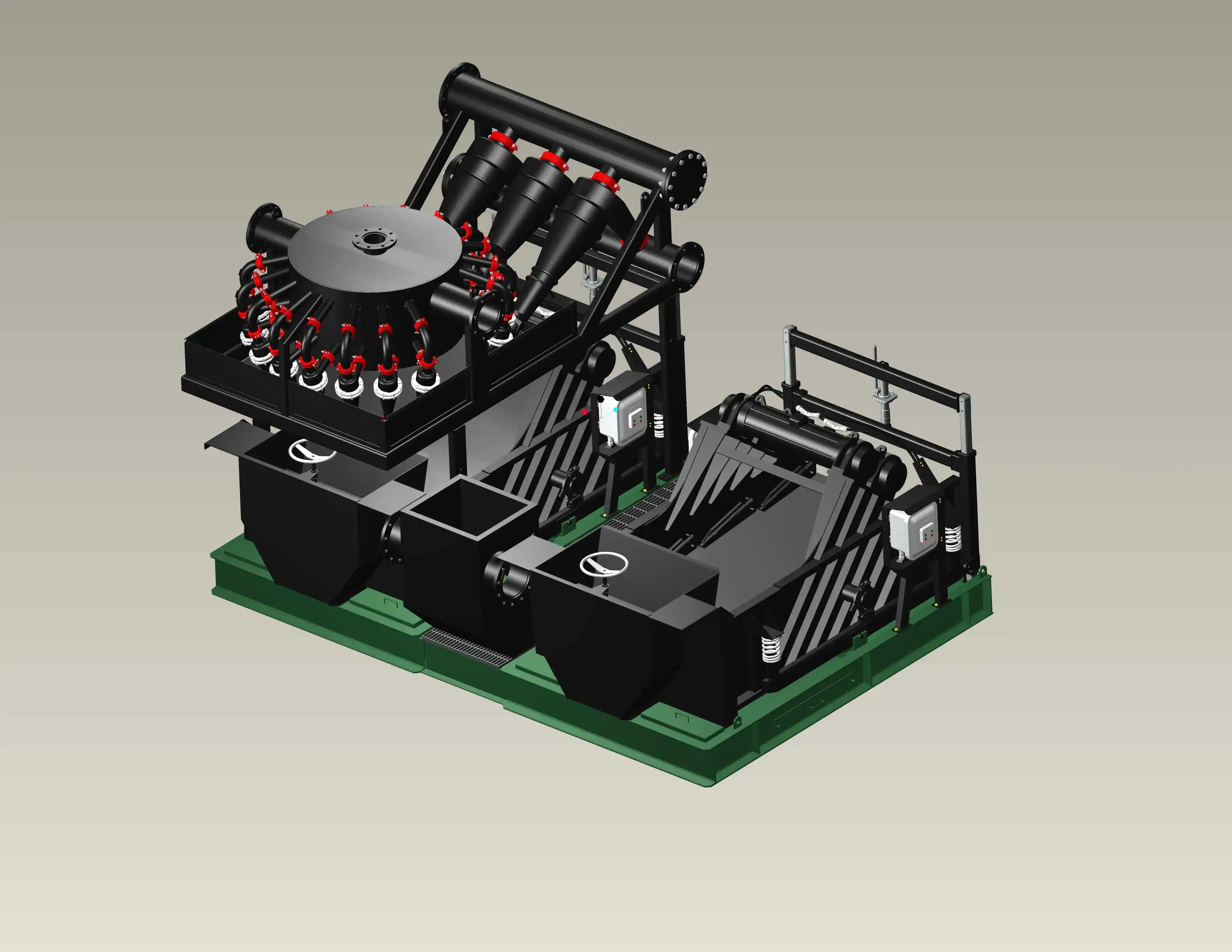고온 드릴링 작업에서 신뢰성 확보
성능은 무드 냉각 시스템 지열, 심층 유정 및 가스정 환경 특히 안전하고 효율적인 드릴링 공정을 유지하는 데 있어 중요합니다. 이러한 시스템은 드릴링 유체의 온도를 조절하여 과열 방지, 다운홀 장비 보호 및 정확한 데이터 측정을 보장하도록 설계되었습니다. 그러나 극한의 조건에서 작동하는 모든 복잡한 시스템과 마찬가지로 머드 냉각 시스템은 다양한 결함에 취약합니다. 일반적인 문제를 식별하고 실용적인 해결책을 적용함으로써 시스템 무결성을 유지하고 비용이 많이 드는 다운타임을 방지할 수 있습니다.
각 구성 요소가 내에서 어떻게 상호작용하는지 이해하는 것은 무드 냉각 시스템 문제가 발생할 때 문제를 해결하기 더 쉽게 만들어 줍니다. 기계적 마모부터 작동 효율성 저하까지 다양한 유형의 고장이 시스템 전체 성능에 상당한 영향을 줄 수 있습니다. 근본 원인을 분석하고 체계적으로 해결함으로써 운영자는 보다 신뢰성 있는 작동과 장비 수명 연장을 달성할 수 있습니다.
기계적 및 구조적 고장
열교환기 오염
머드 냉각 시스템에서 가장 흔한 문제 중 하나는 열교환기 내부의 오염입니다. 오랜 시간이 지나면서 고형물과 스케일이 열교환 표면에 쌓이게 되는데, 이는 열전도율과 시스템 효율을 급격히 저하시키게 됩니다. 이러한 오염물은 압력 강하를 증가시키고 유체 흐름을 제한하여 시스템 과열로 이어질 수 있습니다.
오염을 방지하기 위해서는 정기적인 점검과 청소 일정을 수립해야 합니다. 화학 세척제나 고압 세척과 같은 기계적 방법을 사용하여 원래의 성능을 복원할 수 있습니다. 또한, 머드 유입구에 프리필터나 스트레이너를 설치하면 시스템에 유입되는 고체 입자의 양을 줄일 수 있습니다.
펌프 고장
펌프는 드릴링 머드와 머드 냉각 시스템 전반의 냉각 매체 순환에 필수적입니다. 펌프 고장은 일반적으로 마모된 실(seal), 임펠러 손상 또는 캐비테이션 또는 윤활 불량으로 인한 베어링 문제로 인해 발생할 수 있습니다. 펌프의 고장은 시스템 작동을 즉시 중단시키고 전체 드릴링 프로세스에 위협을 가할 수 있습니다.
정기적인 유지보수 점검 및 진동 모니터링은 펌프 성능 저하의 초기 징후를 감지하는 데 도움이 됩니다. 마모된 부품을 즉시 교체하고 설치 시 올바른 정렬을 보장하는 것이 펌프 수명 연장을 위해 중요합니다. 또한 내마모성 및 고온 환경에서 실과 임펠러에 고성능 소재를 사용하는 것도 신뢰성을 향상시킬 수 있습니다.

운영 및 공정 관련 문제
유량 부족
회로 냉각 시스템을 통한 유량이 부족하면 효과적으로 열을 방출하는 능력이 저하될 수 있습니다. 이는 밸브가 부분적으로 닫혀 있거나, 라인의 막힘 또는 펌프 용량이 부족하여 발생할 수 있습니다. 유량의 불균형은 또한 냉각의 불균일을 초래하여 드릴링 유체 특성의 일관성에 영향을 줄 수 있습니다.
이 문제를 해결하려면 전체 유체 회로에 대한 면밀한 분석이 필요합니다. 유량계와 압력 센서를 사용하여 병목 현상이나 제한 지점을 파악해야 합니다. 병목 현상을 파악한 후에는 배관 청소, 밸브 위치 조정 또는 펌프 용량 업그레이드를 통해 최적의 유량 조건을 복원할 수 있습니다.
열 조절 불량
회로 냉각 시스템 내에서 온도가 변동하거나 불안정하면 드릴링 공구에 열 충격을 가하거나 정확하지 않은 지하 측정 결과를 초래할 수 있습니다. 이러한 온도 변동은 일반적으로 센서 반응 지연, 결함 있는 컨트롤러 또는 열교환기의 일관되지 않은 성능으로 인해 발생합니다.
고정도 온도 센서를 설치하고 디지털 제어 시스템을 사용하면 실시간 모니터링과 보다 정확한 조정이 가능합니다. 경우에 따라 컨트롤러 소프트웨어를 업그레이드하거나 센서를 재교정하면 온도 안정성이 향상될 수 있습니다. 주기적인 센서 검증을 통해 데이터 정확성과 시스템 반응성을 유지할 수 있습니다.
환경적 및 외부 영향
높은 주변 온도
주변 온도가 매우 높은 지역에서는 슬러리 냉각 시스템의 효율이 크게 저하될 수 있습니다. 냉각탑이나 외부 라디에이터가 이미 뜨거운 공기를 이용해 열을 방출해야 하므로 전체 시스템 온도가 상승할 수 있습니다.
이러한 문제는 냉각기 사용이나 증발식 냉각 시스템 도입과 같은 대체 냉각 전략을 통해 해결할 수 있습니다. 냉각탑 주변의 공기 흐름을 개선하고 장비를 직사광선으로부터 차단하는 것도 성능 향상에 도움이 됩니다.
급수 문제
머드 냉각 시스템이 주 냉각 매체로 물에 의존할 경우, 수원의 가용성과 수질이 매우 중요합니다. 유량이 낮거나 미네랄 함량이 높거나 오염된 물은 시스템 비효율 또는 부품 손상으로 이어질 수 있습니다.
이러한 문제를 피하기 위해 수질을 정기적으로 평가해야 합니다. 필터링 장치 설치 및 수질 처리는 스케일 생성과 부식을 줄이는 데 도움이 됩니다. 특히 외진 지역 또는 건조한 지역의 드릴링 현장에서는 지속적인 운영을 위해 예비 급수 시스템 마련이 필수적입니다.
시스템 설계 및 구성의 도전 과제
부적합한 부품 통합
성능이 맞지 않거나 호환되지 않는 부품으로 구성된 머드 냉각 시스템은 성능 저하 또는 고장 빈도 증가를 보일 수 있습니다. 열교환기, 펌프, 제어 장치 간 사양이 상이할 경우 비효율이나 심지어 기계적 고장이 발생할 수 있습니다.
이러한 문제를 해결하려면 시스템 설계에 있어 종합적인 접근이 필요합니다. 모든 구성 요소가 함께 작동하도록 설계되어 유량 용량과 재질 호환성이 일치하게 하면 전체 성능을 향상시킬 수 있습니다. 경험이 풍부한 시스템 통합업체와 협력하거나 모듈식 시스템 아키텍처를 사용하면 부적절한 설치를 방지할 수 있습니다.
시스템 중복성 부족
머드 냉각 시스템에서 중복성을 두지 않고 운전하면 고장 위험이 높아집니다. 단일 펌프 또는 열교환기가 작동을 멈추면 전체 냉각 프로세스가 영향을 받을 수 있습니다. 이는 특히 지속적인 냉각이 필수적인 고온의 유정에서 문제가 더욱 심각합니다.
예비 펌프, 병렬 열교환기 또는 이중 전원 공급 장치와 같은 중복 구성 요소를 도입하면 운전 안정성을 확보할 수 있습니다. 자동 전환 시스템과 실시간 진단 장치를 활용하면 결함 발생 시 즉시 예비 구성 요소가 작동하여 다운타임을 방지할 수 있습니다.
정비 및 모니터링 한계
예지 정비 부족
여전히 많은 진동 냉각 시스템이 고장이 발생한 이후에 문제를 해결하는 수동적 정비 방식에 의존하고 있습니다. 이러한 접근 방식은 치명적인 결함과 장기간의 가동 중단이 발생할 가능성을 높입니다.
예지 정비 전략을 도입하면 시스템 신뢰성을 크게 향상시킬 수 있습니다. 여기에는 진동 센서 및 열화상 장비와 같은 상태 모니터링 도구를 사용하여 마모의 초기 징후를 감지하는 것이 포함됩니다. 예측 분석 소프트웨어는 구성 요소의 고장을 예측하고 예방적 정비 일정을 잡는 데 도움을 줄 수 있습니다.
인력의 부적절한 교육
충분하지 않은 교육으로 인해 잘못된 운전 또는 정비가 이루어지면 진동 냉각 시스템에 다양한 문제가 발생할 수 있습니다. 잘못 설정된 제어 설정, 초기 경고 신호의 간과, 부적절한 고장 진단 방식은 예방 가능한 고장으로 이어질 수 있습니다.
운전자 및 정비 인력에게 포괄적인 교육을 제공함으로써 시스템 작동에 대한 이해도를 높일 수 있습니다. 시뮬레이션 기반 교육 및 업데이트된 운전 매뉴얼은 인력이 정상 운전 조건 및 비상 상황을 보다 효과적으로 대처할 수 있도록 지원합니다.
기술 업그레이드 및 혁신
자동화 및 스마트 제어
첨단 자동화 기술이 현대의 슬러리 냉각 시스템에 점점 더 많이 통합되고 있습니다. 스마트 제어 시스템은 온도를 보다 정확하게 조절할 뿐만 아니라 실시간으로 변화하는 드릴링 조건에 맞춰 자동으로 적응할 수 있습니다.
이러한 지능형 시스템은 데이터 분석과 머신 러닝 알고리즘을 활용하여 성능을 최적화하고, 에너지 효율성을 개선하며, 수동 개입을 줄이는 데 기여합니다. 스마트 컨트롤러로 업그레이드함으로써 운전자는 인적 오류를 최소화하고 슬러리 냉각 시스템 전반의 신뢰성을 향상시킬 수 있습니다.
원격 모니터링 및 진단
원격 모니터링 솔루션을 통해 운영자는 중앙 제어 센터에서 머드 냉각 시스템의 작동 상태를 확인할 수 있습니다. 이러한 시스템은 조기 고장 감지에 도움이 되는 경고 알림, 성능 보고서 및 진단 정보를 제공합니다.
클라우드 기반 대시보드 및 IoT 연결 센서를 활용함으로써 원격 진단을 통해 신속한 대응이 가능해지고 현장 점검 필요성이 줄어듭니다. 이는 특히 해상 또는 접근이 어려운 드릴링 현장에서 큰 이점을 제공합니다.
자주 묻는 질문
머드 냉각 시스템에서 냉각 효율이 저하되는 원인은 무엇입니까?
열교환기 오염, 유량 부족, 주변 온도 상승 또는 부품 마모로 인해 냉각 효율이 저하될 수 있습니다. 정기적인 유지보수와 고품질 냉각 매체 사용으로 이러한 문제를 완화할 수 있습니다.
머드 냉각 시스템에서 펌프 고장을 방지하려면 어떻게 해야 합니까?
펌프 신뢰성은 정기 점검, 적절한 윤활, 진동 분석 및 마모 및 부식에 강한 재료 사용을 통해 향상시킬 수 있습니다. 예지 정비는 펌프 고장을 예방하는 데 중요한 역할을 합니다.
오일쿨링시스템에서 자동화는 어떤 역할을 하나요?
자동화는 유량과 온도를 실시간으로 조절함으로써 최적의 운전 조건을 유지하는 데 도움을 줍니다. 또한 에너지 효율성을 높이고 잠재적 고장에 대한 조기 경보를 제공합니다.
오일쿨링시스템은 극한 기후에 적합한가요?
네, 적절한 설정을 통해 오일쿨링시스템은 극심한 더위나 추위에도 최적화될 수 있습니다. 증발 냉각, 냉각 장치, 시스템 단열과 같은 솔루션을 사용하면 혹독한 환경에서도 성능을 유지할 수 있습니다.

